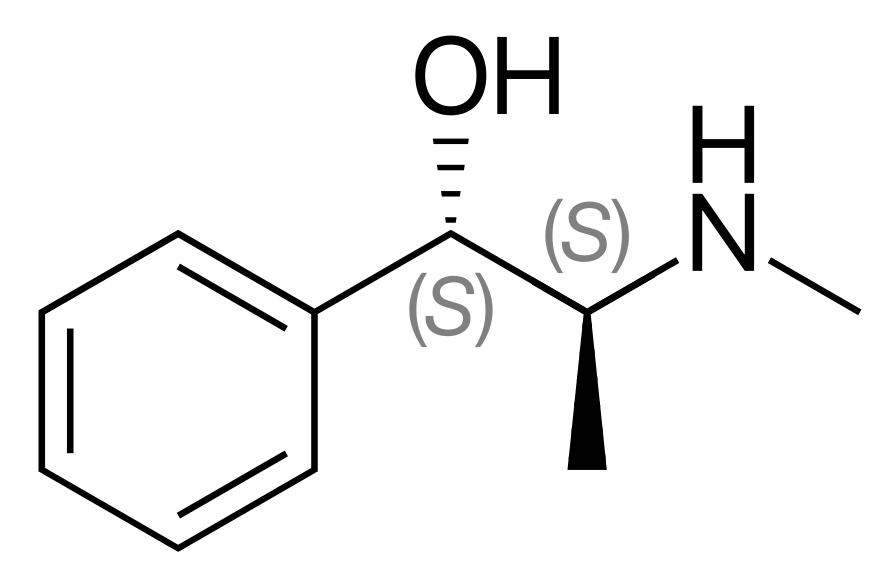HK Technical PGIMS
MedChem
All Adrenergic Drugs Read Easy
MedChem
All Adrenergic Drugs Read Easy
| # | Title | MAO | Clinical Applications | Adverse Reaction |
|---|---|---|---|---|
| 1 | Norepinephrine (Noradrenaline) - Non selective, Direct acting |
It performs its action by being released into the synaptic cleft, where it acts on adrenergic receptors predominantly on the alpha adrenoceptors. | It is used to counteract various hypotensive crises, because it's α-activity raises blood pressure and as an adjunct treatment in cardiac arrest because its beta -activity stimulated the heart. it has limited clinical application caused by non selective nature of its activities. | |
| 2 | Epinephrine (Adrenaline) - Non selective, Direct acting |
It bonds with adrenergic receptors which results in metabolic changes when it binds to α-adrenergic receptors. | It is much more widely used clinically than NE. Epinephrine is used in following conditions: bronchial asthma, hypersensitivity reactions, heart block and cardiac arrest, control of bleeding frequently added to local anesthetics like lignocaine. | |
| 3 | Phenylephrine - Selective α1, Direct Acting |
It is selective direct acting α1- receptor agonist. It is potent vasoconstrictor but less potent than epinephrine. | It is used in the treatment of severe hypotension. It is selective α1-agonist and widely used as non prescription nasal decongestant, used to treat open angle glaucoma. | |
| 4 | Clonidine - Selective α2, Direct Acting |
Clonidine can briefly exhibit vasoconstrictive activity as a result of stimulation of peripheral α - adrenergic receptors. Stimulation of α2 - receptors brings about decrease in sympathetic out flux from CNS which in turn leads to decrease in peripheral vascular resistance and blood pressure. | Treated structurally to imidazoline nasal decongestant originally synthesized as vasoconstriction nasal decongestant but after that found to have dramatic hypotensive effects. | The common side effects are anxiety, constipation, sedation and rare side effects are hallucination, nightmare and itching, |
| 5 | Methyldopa- Selective α2, Direct Acting |
It is originally synthesized as an L-Aromatic Amino Acid Decarboxylase (AADC) inhibitor. However it's mechanism of action is not caused by inhibition of AADC but rather by it's metabolism in CNS to it's active metabolite α - methyl norepinephrine. | It is used in clinical Treatment of hypertension pre-eclampsia. | Dizziness, agitation, dry mouth, migraine and sedation. |
| 6 | Dopamine - β, Direct Acting |
Dopamine is naturally occurring catecholamine and has a neuro transmitter function in CNS. It exerts alpha adrenergic vasoconstrictor activity. Through beta- adrenoreceptor stimulation dopamine increases myocardial contractility. Thus dopamine is a catecholamine which is unique in having a mixed action. | It is recommended for the treatment of shock resulting from trauma, surgery and myocardial infarction also used in the treatment of congestive heart failure, renal and liver failure. | Toxic effects include nausea, vomiting, tachycardia and ectopic beats. Occasionally hypertension may develop. |
| 7 | Dobutamine - Selective β1, Direct Acting |
Dobutamine is a synthetic direct acting sympathomimetics and is potent agonist of B- adrenoceptor. 1. SAR: Due to premise of asymmetric carbon atom it exists as a pair of enantiomer. The (+) enantiomer is a potent full agonist at β1 and β2 receptors. 2. The (-) enantiomer is 10 times less potent at β1 and β2 receptors. 3. Racemic (+) dobutamine has direct activity on both α1 and β1, receptors. |
It is used in the treatment of congestive heart failure. Dobutamine more useful than dopamine in the treatment of cardiogenic shock. | Premature ventricular beats occur in 5% of patients, hypertension, angina pain, arrhythmia, nausea, headache. |
| 8 | Isoproterenol (Isoprenalin) - β1 β2 , Direct Acting |
The pharmacological action of isoprenaline are due to its powerful beta stimulant activity and it has almost no action on alpha receptors. | It is used in treatment of moderate to severe attack of bronchial asthma. It is potent cardiac stimulant and hence useful for immediate treatment of heart block. Isoprenaline may be employed in cardiogenic shock. | Isoproterenol may cause palpitation, tachycardia, headache and flushing of skin, serious arrhythmia, angina pain, tremors, dizziness and sweating occasionally occur. |
| 9 | Terbutalin - Selective β2, Direct Acting |
3'5'-di-OH groups confers β2 receptor selectively on compounds with a large amino substitutes. They relax the bronchial muscle. | Used in patients with asthma but cause less direct cardiac stimulation. Common cardiovascular effects associated with other adrenergic agents can also be seen when high does are used. | Common side effects of terbutaline include: Tremor, nervousness, dizziness, headache, drowsiness, palpitations, rapid heart rate, shortness of breath, chest discomfort, nausea, vomiting, weakness, flushed feeling, sweating, pain at the injection site, anxiety, muscle cramps, and dry mouth. |
| 10 | Bitolterol - Selective β2, Direct Acting |
Bitolterol is a type of β2 adrenergic agonist. When β - adrenergic receptor are activated its activation results in relaxation of smooth muscle in the lung and dilation and opening of the airways which make airflow easy through the tubes. | It is used for the relief of bronchospasm in condition like COPD and asthmas. | Cough, dry mouth, high blood pressure, irritation of the larger air passage of the lungs, mouth irritation, nervous, taste problems, temporary redness of face and neck. |
| 11 | Salbutamol (albuterol) - Selective β2, Direct Acting |
It is a short-acting β2 adrenergic receptor agonist which works by causing relaxation of airway smooth muscle. It is 29 times more selective for beta2 receptors than beta1 receptors giving it higher specificity for pulmonary beta receptors versus beta1-adrenergic receptors located in the heart. | Used to treat wheezing and shortness of breath caused by breathing problems (such as asthma, chronic obstructive pulmonary disease COPD). it belongs to a class of drugs known as bronchodilators. | most common side effects are fine tremor, anxiety, headache, muscle cramps, dry mouth, and palpitation. Other symptoms may include tachycardia, arrhythmia, flushing of the skin, myocardial ischemia (rare), and disturbances of sleep and behaviour. |
| 12 | Naphazoline - Selective α1, Direct Acting |
Naphazoline stimulates alpha-adrenergic receptors in the arterioles of the conjunctiva. Ophthalmic administration causes vasoconstriction of conjunctival blood vessels thereby decreasing conjunctival congestion. | Naphazoline is a decongestant used to relieve redness, puffiness, and itchy/watering eyes due to colds, allergies, or eye irritations (smog, swimming, or wearing contact lenses). It is known as a sympathomimetic (alpha receptor agonist) that works in the eye to decrease congestion. | Ophthalmic use may cause dizziness, nausea, sweating, drowsiness, weakness, nervousness, worsening redness/itching/swelling in or around the eyes. |
| 13 | Oxymetazoline - Selective α1, Direct Acting |
Oxymetazoline binds to and activates alpha-2 adrenergic receptors. Upon nasal or ocular administration, oxymetazoline constricts the arterioles in the nose and eye, resulting in decreased nasal and conjunctival congestion, respectively. | Oxymetazoline nasal spray is used to relieve nasal discomfort caused by colds, allergies, and hay fever. It is also used to relieve sinus congestion and pressure. | Agitation, anxiety, insomnia, convulsions, tachycardia and vasoconstriction. The cardiovascular side effects are also seen at the time of use of local decongestants. |
| 14 | Xylometazoline (xylomethazoline) - Selective α1, Direct Acting |
Xylometazoline is a direct acting sympathomimetic adrenergic alpha-agonist used to induce systemic vasoconstriction, thereby decreasing nasal congestion. The sympathomimetic action of xylometazoline constricts the smaller arterioles of the nasal passages, producing a prolonged (8-12 hours) decongesting effect. | Nasal decongestant that shrinks blood vessels in the nasal passages. [Dilated blood vessels can cause nasal congestion (stuffy nose).] Xylometazoline nasal (for use in the nose) is used to treat stuffy nose caused by allergic rhinitis, sinusitis (sinus irritation), or the common cold. | Xylometazoline nasal side effects, blurred vision, headache, dizziness, nervousness, fast or pounding heartbeats, a light-headed feeling, like you might pass out, wheezing, feeling short of breath, or worsening symptoms. |
| 15 | Hydroxyamphetamine - Indirect Acting |
It stimulates the norepinephrine which release from central adrenergic receptors. Hydroxyl - amphetamines in periphery causes the release of noradrenaline when it acts on the adrenergic nerve terminals, alpha and beta receptors. | It is used to dilate the pupil for diagnostic eye examinations and for surgical procedures to the eye. It is employed in the treatment of narcolepsy, depressive states motion sickness and obesity. | It may induce dryness of mouth, restlessness, isomnia, anorexia, with higher dose there may be hypertension, tachycardia, angina pain and cardiac arrhythmia. |
| 16 | Pseudoephedrine - Indirect Acting |
Ephedrine has a mixed mechanism of action, L-(+) pseudoephedrine acts mostly by an indirect mechanism and has virtually no direct activity. | L-(+) pseudoephedrine's lack of direct activity affords fewer CNS effects than does ephedrine. This agent is found in many OTC nasal decongestants and cold medications. | Common adverse drug reactions (ADR) associated with pseudoephedrine therapy include central nervous system stimulation, insomnia, nervousness, excitability, dizziness and anxiety. Infrequent ADRs include tachycardia or palpitations. Rarely, pseudoephedrine therapy may be associated with mydriasis (dilated pupils), hallucinations, arrhythmias, hypertension, seizures and ischemic colitis: as well as severe skin reactions known as recurrent pseudo-scarlatina, systemic contact dermatitis etc. |
| 17 | Propylhexedrine - Indirect Acting |
This drug produces vasoconstriction and a decongestant effect on the nasal membranes. It produces fewer effects on the CNS. | It's major use is for local vasoconstriction on nasal mucosa in the symptomatic relief of nasal congestion caused by the common cold, allergic rhinitis or sinusitis. | Burning, stinging, sneezing, Increase in nasal Discharge. |
| 18 | Ephedrine - Mixed Acting |
The drug acts on both alpha and beta receptors. It is the classic example of a sympathomimetic with a mixed mechanism of action. | Ephedrine and its salts are used orally intravenously and topically for a variety of conditions such as allergic disorders cold, hypotensive conditions and narcolepsy. | Arrhythmia, anxiety, tachycardia, headache, hypertension, acute pulmonary edema, panic attack. |
| 19 | Metarminol - Mixed Acting |
Metarminol selective for α1 receptors have little cardiac stimulant action. It is used for hypotension. | It has widespread use as a non-prescription nasal decongestant, reduces congestion and swelling by constricting blood vessels of membranes. In an eye, it is used to dilate pupil and to treat open angle glaucoma. It is used in spinal anaesthesia. | It is relatively non-toxic and produces little CNS stimulation. |
| 20 | Tolazoline - α - antagonist |
Tolazoline and phentolamine have both α1 and α2 blocking activity and produce tachycardia. The blocking action of these agents at presynaptic α2- receptors, contributes to their cardiac stimulatory effects by enhancing release of NE. | Tolazoline is used to increase blood flow in peripheral vasospastic condition like Raynaud's syndrome. Tolazoline used in persistent pulmonary hypertension of the newborn. | Palpitation, tachycardia, flushing, sweating, headache, and paresthesia of the skin. Tachycardia increased gastrointestinal motility and hyperchlorhydria. |
| 21 | Phentolamine - α - antagonist |
Tolazoline and phentolamine have both α1 and α2 blocking activity and produce tachycardia. The blocking action of these agents at presynaptic α2- receptors, contributes to their cardiac stimulatory effects by enhancing release of NE. | It is used in the treatment of hypertension and hypertensive emergencies, pheochromocytoma, vasospasm of raynaud disease and frostbite, clonidine withdrawal syndrome, impotence, and peripheral vascular disease. | Acute and prolonged hypotensive episodes, fast heart rate, cardiac arrhythmias, weakness, dizziness, flushing, dizziness upon standing (orthostatic hypotension), stuffy nose. |
| 22 | Phenoxybenzamine (Haloalkylamines) - α - antagonist |
They are irreversible blockers of α - adrenergic receptors. Chemically it is a β haloalkylamine produce a long lasting, irreversible α - adrenergic blockade. Initial step involves the formation of an intermediate aziridinium ion which will form reversible complex with the receptor. The positively charge aziridinium ion electrophile then reacts with a nucleophilic group on the receptor resulting in the formation of covalent bond between the drug receptor which will lead to alkylated receptor. | Phenoxybenzamine is used to treat peripheral vasospastic conditions like Raynaud's disease, used in treatment of hypertension. | Side effects include nasal congestion, bronchoconstriction and mosis, reflex tachycardia, congestive heart failure, cerebral stroke or kidney failure. |
| 23 | Prazosin - Selective α1 - antagonist |
It has potent α1 - adrenoreceptor blocking activity. It is potent and effective antihypertensive agent and maybe useful combined with the beta-adrenoreceptor blockers, and thiazide diuretics. | Used in treatment of hypertension and heart attack. Also help to improve urination flow rate. | Side effects of prazosin are nasal congestion, dizziness, tiredness, nausea, drowsiness, blurred vision, orthostatic hypotension. |
| 24 | Dihydroergotamine - α - antagonist |
Dihydroergotamine increases the α - blocking potency and reduces the smooth muscle stimulant activity. | Dihydroergotamine used to treat migraine. The pain of migraine and vascular headache is associated with vasodilation, odema; dihydroergotamine is effective due to its action on vascular smooth muscle and should be given during vasoconstriction phase. | Nausea is a common side effect of IV administration and less common in other modes. Antiemetics can be given prior to DHE to counteract the nausea. Risks and contraindications are similar to the triptans. DHE and triptans should never be taken within 24 hours of each other due to the potential for coronary artery vasospasm. DHE produces no dependence. Vomiting, blurred vision, nasal stiffness. |
| 25 | Methysergide - α - antagonist |
Methysergide interacts with serotonin (5-HT) receptors. Its therapeutic effect in migraine prophylaxis has been associated with its antagonism at the 5-HT2B receptor. It is an antagonist at the 5-HT2C receptor, while at the 5-HT1A receptor it serves as a partial agonist. It is known to have partial agonist effects on some of the other 5-HT receptors as well. It antagonizes the effect of serotonin in blood vessels and gastrointestinal smooth muscle, but has few of the properties of other ergot alkaloids. |
It is used to treat headache, carcinoid syndrome and serotonin syndrome. | Its common side effect is retroperitoneal fibrosis. Rare effects are pleural and subendocardial fibrosis. |
| 26 | Propranolol - β - antagonist |
It is prototypical & nonselective β-blockers. It blocks the β1 & β2 receptors with equal affinity | Propranolol approved for use in angina pectoris, past myocardial infarction, hypertension, cardiac, migraine prophylaxis & essential tremor also used in CNS disorders. | Sleep disturbance like insomnia & nightmares. Propranolol should be used with caution in people with: Diabetes mellitus or hyperthyroidism, since signs and symptoms of hypoglycemia may be masked. Peripheral vascular disease and Raynaud's syndrome, which may be exacerbated. Pheochromocytoma, and hypertension may be aggravated without prior alpha blocker therapy. |
| 27 | Atenolol - β - antagonist |
It is a type of selective β1 receptors antagonist, a drug belonging to the group of β - blocker used in treatment of cardiovascular diseases & hypertension. | Atenolol is used for a number of conditions including hypertension, angina, long QT syndrome, acute myocardial infarction, supraventricular tachycardia, ventricular tachycardia, and the symptoms of alcohol withdrawal. | Atenolol was the main B-blocker identified as carrying a higher risk of provoking type 2 diabetes, loading to its downgrading in the United Kingdom in June 2006 to fourth-line agent in the management of hypertension. Antihypertensive therapy with atenolol provides weaker protective action against cardiovascular complications (e.g. myocardial infarction and stroke) compared to other antihypertensive drugs. In some cases, diuretics are superior. In addition, atenolol has been found to lack mortality benefits and even to increase mortality in older adults. |
| 28 | Metaprolol - β - antagonist |
Metoprolol blocks B1 adrenergic receptors in heart muscle cells, thereby decreasing the slope of phase 4 in the nodal action potential (reducing Na+ uptake) and prolonging repolarization of phase 3 (slowing down K+ release). It also suppresses the norepinephrine-induced increase in the sarcoplasmic reticulum (SR) Ca2+ leak and the spontaneous SR Ca2+ release, which are the major triggers for atrial fibrillation. | It is used in treatment of hypertension, acute myocardial infarction, angina supraventricular & ventricular tachycardia. It is also used in treatment of migraine headaches & congestive heart failure. | Side effects, especially with higher doses, include dizziness, drowsiness, fatigue, diarrhea, unusual dreams, trouble sleeping, depression, and vision problems. Metoprolol may also reduce blood flow to the hands or feet, causing them to feel numb and cold; smoking may worsen this effect. Due to the high penetration across the blood-brain barrier, lipophilic beta blockers such as propranolol and metoprolol are more likely than other less lipophilic beta blockers to cause sleep disturbances such as insomnia and vivid dreams and nightmares. |
| 29 | Acetylcholine - Non selective, Direct acting |
Muscarinic and nicotinic agonist, a physiological neurotransmitter for cholinergic nervous system. lack of specificity for muscarinic and nicotinic make it poor therapeutic agent. Stable in solid crystalline form but undergo rapid hydrolysis in aqueous solution. | Cant be administered orally due to rapid hydrolysis in GIT. Parenterally hydrolyzed by butyrylcholinesterase(pseudocholinesterase) in serum. | |
| 30 | Methacholine - Selective, Direct acting |
Selective Muscarinic agonist, little activity at nicotinic receptor. Marketed as racemic mixture. S-(+)-enantiomer is 240-fold morepotent thatn R-(-)-isomer. | Disgnosis of Asthma &Belladonna poisoning. Control superventricular tachycardia. Later | Replaced by ectrophonium and other drugs which are safer. |
| 31 | Carbachol - Non selective, Direct acting |
Muscarinic + Nicotinic activity. Also act indirectly by stimulating release of acetylcholine and by its weak anticholineterase activity | treatment of glaucoma to reduce intraocular tension and for induction of miosis in ocular surgery. | |
| 32 | Bethanechol - selective, Direct acting |
More effective action on M3 receptor and almost no activity at nicotinic receptor. | Relief of urinary retention and abdominal distention after surgery. Used orally or by subcutaneous injection. | Never be administered by intramuscular or intravenously because danger from cholinergic overstimulation and loss of selective action. Should be cautions in asthmatic patients when used for glaucoma. Cause frontal headache from constriction of the sphincter muscle in the eye and from ciliary muscle spasms. |
All past notifications from University of Health Sciences, Rohtak.
Included of all past notices removed from official UHSR website, available on here only.
In case, Feaures are not working on this website, please update your browser to latest version or use another browser. Recommended Browsers are Chrome, Firefox, iOS browser, Safari. Further if you think this is an error, please feel free to contact us at [email protected] or you may also Chat with us.